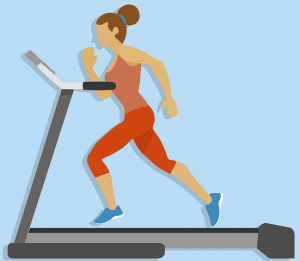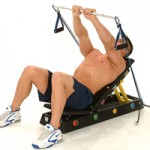There used to be a time when doctors would counsel hypertension patients against resistance training. The prevailing opinion was that lifting weights would increase blood pressure, so those already fighting it should avoid aggravating the condition. However, once medical professionals became aware that bodybuilders had lower overall blood pressure than those who didn’t follow a strict workout regimen, they began rethinking the issue. Several studies have been done over the years that all indicate resistance exercise is one of the best ways to naturally lower blood pressure.
Gifts With Purchase

Resistance training incorporated with aerobic exercise lowers blood pressure and makes you feel great!
Resistance training improves your overall cardio health, so you decreased blood pressure can be considered a side effect. It’s a pretty significant side effect, however, for people who have tried everything to bring their systolic and diastolic numbers down. Resistance exercise is an effective way to lower blood pressure because it makes your cardiovascular system perform more efficiently, transporting oxygen-rich blood throughout your entire body with less effort.
However, resistance training works to reduce your blood pressure in many different ways. Web MD explains that it helps increase muscle mass and boost metabolic rate. With those elements in play, you should be able to lose body fat even with minimal or no change to your diet, and that’s another piece of the blood pressure puzzle. Losing as few as 10 pounds has been shown to lower or even prevent high blood pressure in people who are overweight. Just to sweeten the pot, in his book “High Blood Pressure for Dummies,” Dr. Alan L. Rubin lists a few non-blood pressure-related perks including increased strength and fitness, improved confidence, stronger bones, and better balance.
Lifestyle Change Alert!

Even committing to taking BP medication is a lifestyle change — so why not opt for working out to look AND feel great?
Those who want to lower blood pressure with a quick-fix instead of shifting gears for a lifestyle change should probably stick to medication. That isn’t the healthiest route with the best prognosis, but you can’t just add resistance training to your schedule for a few weeks or months with the plan of quitting exercise once your numbers come down. According to Volume III of the Encyclopedia of Sports Medicine, people who engaged in short-term resistance training didn’t show as much of an improvement in blood pressure as people who permanently added working out to their schedules. The bottom line is that whether you commit to taking medication the rest of your life, decide to cut salt out of your diet from here to eternity, or include resistance training on your lifetime agenda, you’re making a lifestyle change. The workout option offers the most benefits with the least drawbacks. (When have you ever seen the same list of adverse side effects attached to exercise that usually comes with every bottle of medication?) Since studies show resistance training can significantly reduce your blood pressure, isn’t it the best option on the table?
Resistance Training to Reduce Blood Pressure

Talk to your doctor before beginning a resistance training program to lower blood pressure. Image by Vic/Flickr
The first thing to do if you want to give resistance training a try for lowering high blood pressure is to talk to your doctor. He can help you tailor your program to your specific circumstances and offer warnings or advice. You’ll want to start out lifting light weight and with more reps until your blood pressure improves. Only do one set of 12 to 15 reps at first, and don’t lift so heavy that you’re struggling at the end of the set, just heavy enough that you’re starting to fatigue by the 12th or 15th rep. Rest a full 90 seconds between sets and exercises. As your strength and blood pressure improve, increase your weight and the number of sets you do. If you’re looking for a specific workout that has proven to lower blood pressure, you could always try the one researchers used in a study on the positive effects of resistance training on blood pressure. According to Precision Nutrition, the participants worked out three days a week with a minimum of one rest day in between, completing three sets of 12 reps each of:

A workout that incorporates all the muscles in your body helps you look great — a nice side effect to lowering blood pressure.
- leg curls
- leg presses
- lat pulldowns
- chest presses
- biceps curls
- shoulder presses
- triceps extensions
It’s a full-body workout that’s useful as part of a comprehensive exercise program that also incorporates 75 to 120 minutes of aerobic exercise each week for lower blood pressure and overall better health.

